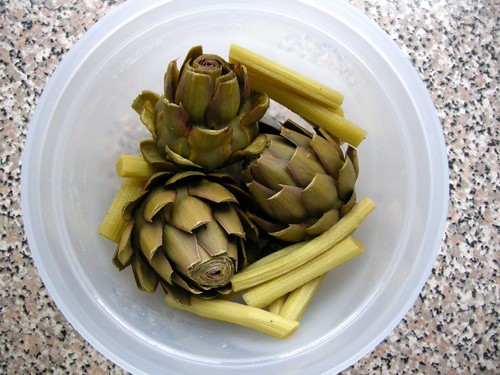
Day lily petal hailed to the ground
Yesterday I returned home just after a hail had passed. It was larger hail than I normally get, and a lot of them. I grabbed the camera, the injured day lily petal was beautifully resting in the hails.
The garlic suffered no damage to the leaves. Just had a winterly look 🙂

Artichoke leaf with hail damage
The large artichoke leaves got a lot of holes in them. Still, I don’t expect it’ll influence the harvest.
The lettuce probably had the worst damage to their fragile leaves. Plants are still young, and new leaved will grow perfect. Slugs are a greater threat to them.
I’m most troubled by the few melon seedlings. I sowed the melons on 5th. of June, with a perfect warm and sunny weather forecast. The forecast was wrong, weather cold, and indoor we had to heat the house and dress warmly. The very few seedling I found cuddled with ice balls! If I harvest any outdoor melons this year, it’s a small miracle. And if they have useful seeds, my melon breeding work is doing better than I could hope for. Probably just a dream.
Decorative they were, the hails by the sheared Norway spruce.
All in all a great experience of weather and garden.
























